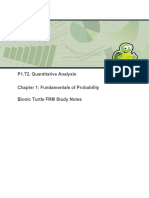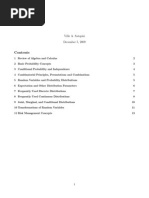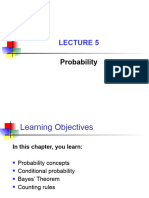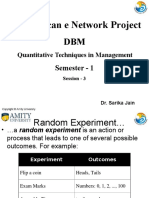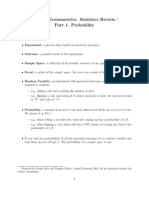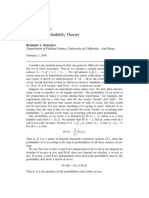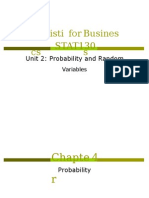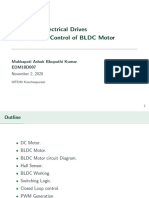Chapter 1: Fundamentals of Probability
Objective
Master the foundational principles of probability theory for application in risk
modeling, scenario analysis, and quantitative finance, including conditional prob-
ability, independence, and Bayes’ Rule.
Key Topics
1. Sample Space, Event Space, and Events
• Sample Space (Ω): All possible outcomes of an experiment.
– E.g., R for S&P 500 returns, {Default, No Default} for credit events.
• Event Space (F): All possible events that can be assigned probabilities.
• Event (A): A subset of the sample space; includes elementary and com-
pound events.
• Events are represented using set notation: intersections (∩), unions (∪),
and complements (Ac ).
2. Probability Fundamentals
• Probability: A number between 0 and 1 assigned to events.
– Frequentist interpretation: Long-run relative frequency.
– Subjective interpretation: Degree of belief.
• Three Axioms of Probability:
1. Pr(A) ≥ 0
2. Pr(Ω) = 1
P
3. For mutually exclusive events: Pr(A1 ∪ A2 ∪ . . . ∪ An ) = Pr(Ai )
1
�3. Conditional Probability
Pr(A∩B)
• Definition: Pr(A | B) = Pr(B)
• Adjusts likelihood based on additional known events.
• Law of Total Probability:
n
X
Pr(A) = Pr(A | Bi ) · Pr(Bi )
i=1
(for mutually exclusive and exhaustive {Bi })
4. Independence & Conditional Independence
• Independent Events: Pr(A ∩ B) = Pr(A) × Pr(B)
• Mutually Exclusive ̸= Independent: Mutually exclusive ⇒ depen-
dence.
• Conditional Independence:
Pr(A ∩ B | C) = Pr(A | C) · Pr(B | C)
5. Bayes’ Rule
• Used to update beliefs based on new evidence.
Pr(A | B) · Pr(B)
Pr(B | A) =
Pr(A)
• Application: Used in credit scoring, fraud detection, investment fore-
casting.
Common Exam Traps
• Mixing up independence and mutual exclusivity:
– Mutually exclusive ⇒ not independent.
• Wrong denominator in Bayes’ Rule: Always use total probability.
• Confusing Pr(A ∩ B) with Pr(A | B).
• Misidentifying the sample space—especially in multi-step or condi-
tional setups.
• Ignoring conditionality when asked for updated probabilities.
2
�Mnemonics & Shortcuts
• ”CUTI” for core set operators:
– Complement (Ac )
– Union (A ∪ B)
– Total probability
– Intersection (A ∩ B)
• ”Big 3” Axioms of Probability:
– Non-negativity, Normalization, Additivity
• For Bayes’ Rule: Think “Reverse Condition = Likelihood × Prior ÷
Evidence”
3
�Top 5 Exam Takeaways
1. Conditional probability and Bayes’ Rule are crucial for updating risk as-
sessments and estimating posterior beliefs.
2. Independence ̸= Mutual Exclusivity — understand this distinction to
avoid trap questions.
3. Law of Total Probability is often tested in multi-part probability questions
involving partitions or scenario modeling.
4. Set theory logic (∪, ∩, Ac ) underpins most probability manipulations —
master Venn diagram reasoning.
5. Bayes’ Rule applications (e.g., fraud detection, fund manager performance)
are highly testable in real-world scenario formats.




